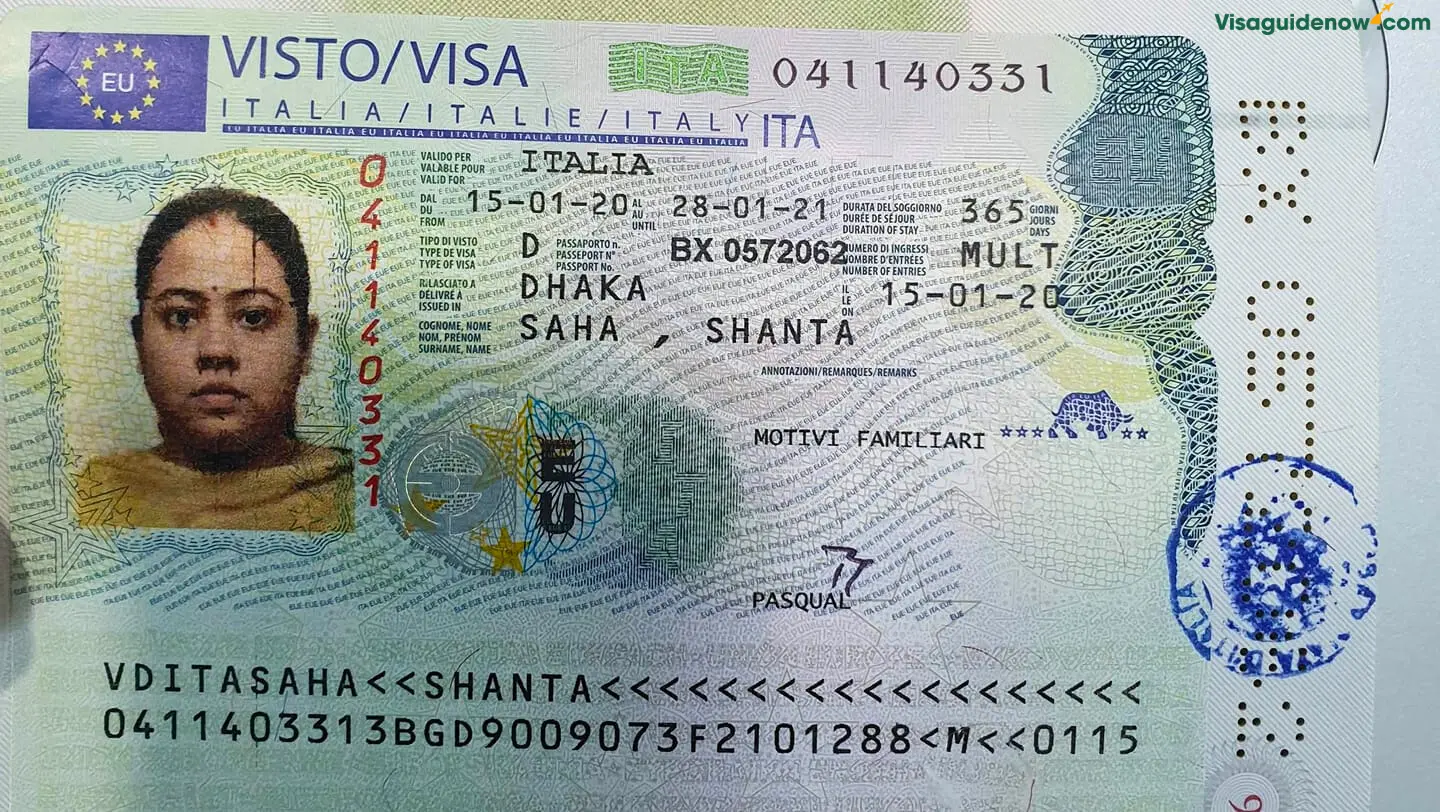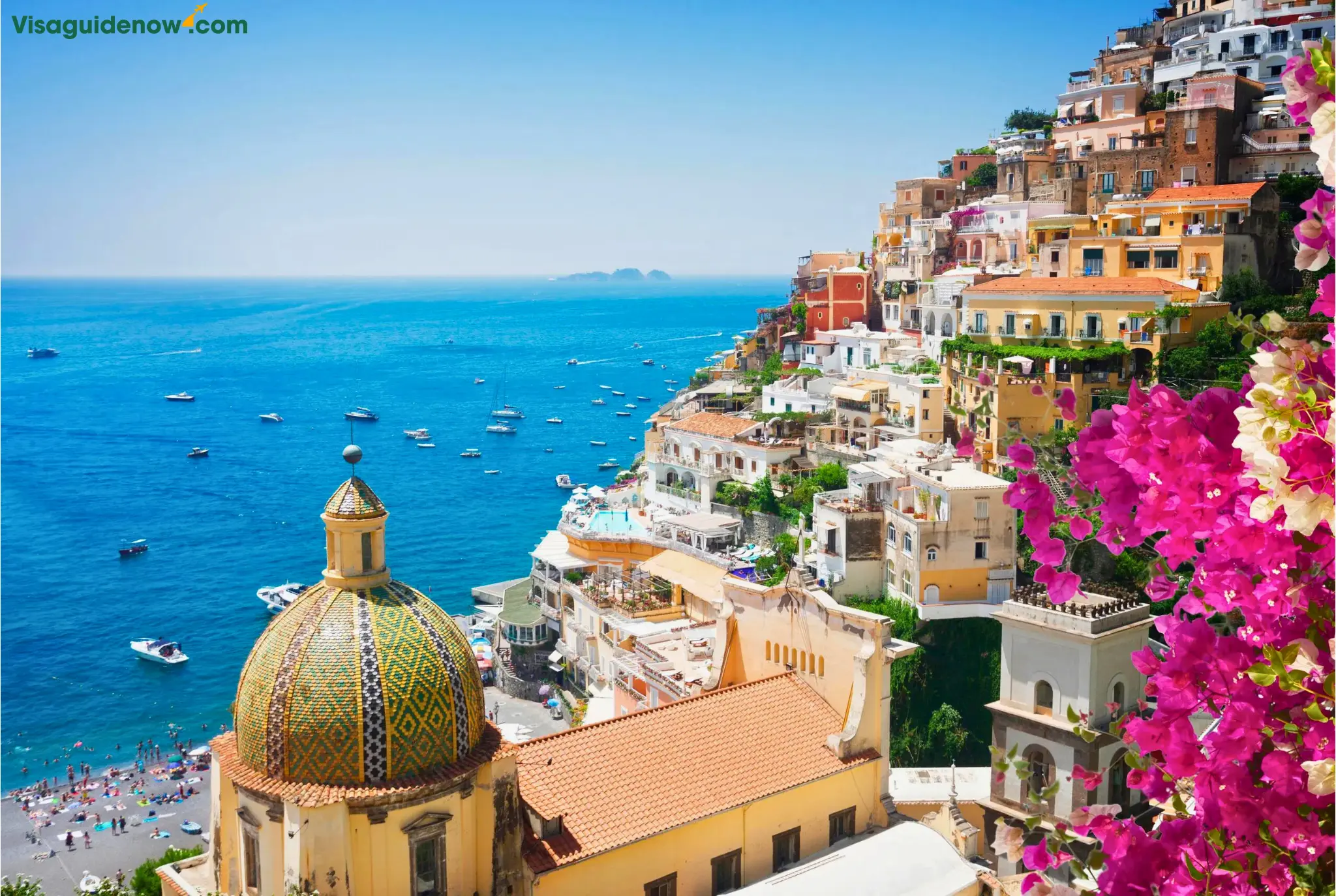Italy Visa Types, Requirements, and Application
An Italy visa is the key to unlocking the door to a country celebrated for its rich history, art, and unique cuisine, home to three of the world’s most beautiful cities: Rome, Florence, and Venice. In this article, we delve into the exploration of Italian visa types, providing detailed information on the requirements and application process, to best prepare you for your adventure to Italy.
Who needs a visa to enter Italy?
Visa exemption
- Italy is a country in the Schengen area. Therefore, this country allows citizens from 🇨🇭 Switzerland and EEA countries to come here without a visa. These EEA countries include:
- Additionally, citizens of countries other than the EU can also visit Italy and other Schengen countries without a visa for up to 90 days. These countries include:
Transit visa
You need an airport transit visa (Type A) to Italy if you are a citizen of the following countries:
Italy visa types
To fully explore Italy, understanding the different types of visas and related regulations is the first and most important step. Below are some of the common Italian visa types you should know before planning your trip.
- Airport transit visa (Type A): This visa is for individuals who need to transit through the international zone of the member countries’ airports but are not allowed to enter the Schengen area. The Airport Transit Visa is suitable for short-term trips when you only need to stop in Italy without the need to explore outside the airport area.
- Uniform Schengen visa (USV – Type C): This visa type allows you to stay for a maximum of 90 days within any 180-day period, counting from the first entry date. Depending on the individual’s needs and conditions, the visa can be granted with one, two, or multiple entries. The Uniform Schengen Visa can be issued with a validity ranging from one year to five years, facilitating continuous trips to Italy or other Schengen countries.
- Limited territorial validity visa: Considered a special exception, this visa is only valid in the Schengen country issuing the visa or, in some special cases, can also be used in specifically designated other Schengen countries. This type of visa is usually issued for humanitarian, national, or international obligation reasons when the conditions necessary for the Uniform Schengen Visa are not met.
- Long-term or “National” visa (Type D): This visa is for those wishing to stay in Italy for more than 90 days, possibly with one or multiple entries. Holders of the Type D visa can move freely in other Schengen countries, not just in the issuing country, provided that the stay does not exceed 90 days in any six-month period, and the visa is still valid.

Italy visa requirements
The mandatory requirements you need to note when applying for an Italian visa include the following items:
- Passport: This is an indispensable document in any visa application. To travel to Italy, your passport must remain valid for a minimum of three months beyond your intended exit date and should have been issued no more than a decade ago. This ensures the passport’s validity throughout your stay in Italy, as well as avoiding any unnecessary complications at the border.
- Visa fee: The visa application fee depends on the type of visa you are applying for and sometimes on your age. The Schengen visa fee for adults is usually 80 euros, while long-term visas have a higher fee.
- Personal photos: You need to provide two recent photos in the style and size of passport photos. These photos help the consular authority verify your identity and cross-reference with your personal information.
- Supplementary documents: You will need to provide additional documents to prove your identity, the purpose of the trip, and your financial situation. The types of supplementary documents usually include:
– Personal records: Such as a birth certificate, helping the consular authority clearly determine your identity and origin.
– Financial documents: Such as bank statements, proving you have sufficient financial resources to cover the trip and stay in Italy.
– Accommodation information: Booking documents for hotels or invitation letters from relatives in Italy, providing evidence of where you will stay during your time in Italy.
– Educational documents: University diplomas or certificates, in case you are going to study or participate in short courses.
– Health insurance: You must have health insurance valid across the Schengen area, with a minimum coverage of 30,000 euros, ensuring you are covered in case medical care is needed.
Note: All documents must be in Italian or English, or accompanied by an official translation.

How to apply for Italy visa?
The process of applying for an Italy visa can be somewhat complex, but with detailed and careful guidance, you will find this process much more manageable. Here are the steps you need to follow to successfully apply for an Italian visa.
Step#1. Prepare the visa application
First, determine the type of Italian visa you need based on the purpose of your trip and the expected duration of stay. There are three main types of visas: airport transit visa (Type A), Short-term Schengen visa (Type C), and Long-term or National visa (Type D). Then, choose the purpose of your trip (tourism, medical, work, etc.) and the type of entry visa (single or multiple entries). This determines how you proceed with the next steps of the application process.
Step#2. Fill out the visa application
You should submit your Schengen visa application for Italy online through the official visa portal system. If you cannot access the online form, you may need to submit the application directly at the Italian Embassy/Consulate in your local area. Whether applying online or in person, you will need to send the official application through the Italian embassy/consulate/consular office in your local area to meet the requirements for in-person presence.
Step#3. Gather all necessary documents
Collect all necessary documents, including your passport, photos, financial statements, and any other documents that support your visa application based on its type.
Step#4. Pay the visa fee
The visa fee depends on the type of visa you are applying for and can sometimes be paid online at this stage of the application process. Otherwise, you may be asked to pay during the visa interview.
Step#5. Schedule a visa interview
Most applicants for an Italian visa, including those who apply online, must attend a visa appointment at the local Italian embassy/consulate/consular Office. Scheduling a visa interview can take from a few days to several months. If you applied through the Italian visa portal, you might be able to schedule an interview online. Otherwise, you may need to directly contact the embassy/consulate/consular office via email/phone to schedule.
Step#6. Attend the visa interview
Here, you will provide biometric information, answer interview questions, and meet other requirements depending on your visa type. This is often the final stage in the Italian visa application process; you will either be granted a visa, receive a denial notice, or wait for a decision after the appointment.
Individuals seeking a long-duration national visa for Italy are required to lodge their application in person at the Italian embassy/consulate or through a designated visa processing facility locally. Remember that some visa types may require additional steps, such as applying for an Italian work permit or residency permit, depending on the visa type.
